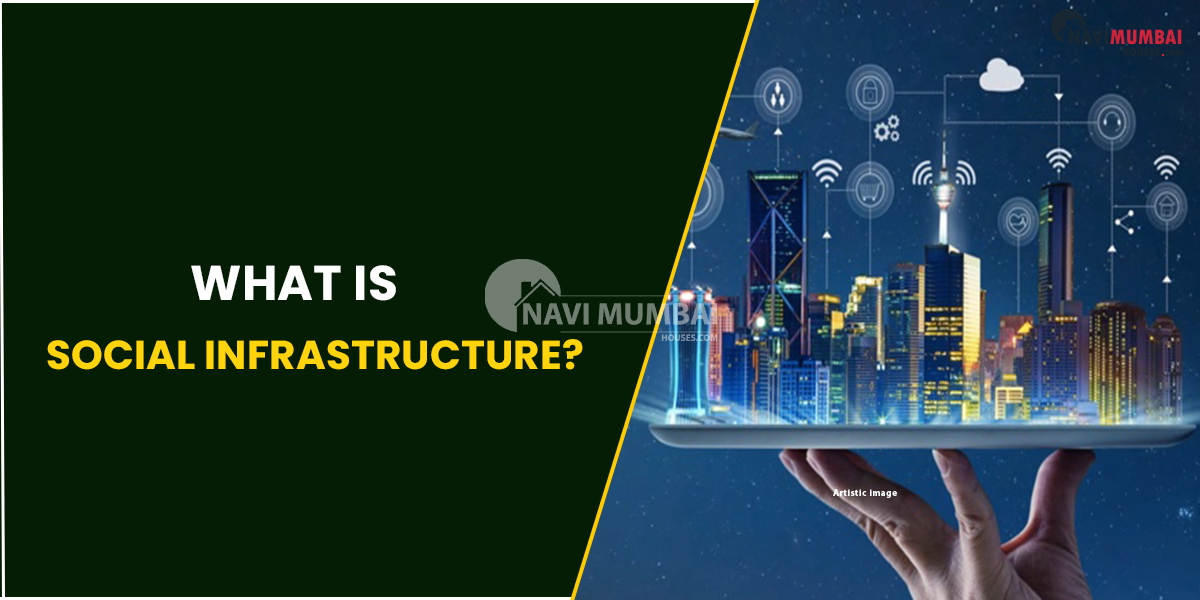
- December 15, 2022
- News
What Is Social Infrastructure?
Social infrastructure is a component of the wider infrastructure environment that is crucial to the advancement of disadvantaged and marginalised populations. A general phrase used to categorise services that assist in meeting people’s physical requirements is “social infrastructure.” Previously, it was thought of as an addition to mainstream services. But over time, it became clear that a strong infrastructure was necessary.
Everybody can live in a nation that has a strong social infrastructure. It encourages rapid economic growth and inclusive social progress. Deep-rooted disparities in income, health, and style of life can be eliminated with the aid of an effective infrastructure. Continue reading to learn more about social infrastructure, its benefits to society and the economy, and more:
Are you looking flat for sale in Kharghar?
Social infrastructure: what is it?
Social infrastructure refers to creating and maintaining facilities that support social services as a component of the broader infrastructure. In the healthcare sector, these include medical facilities and supporting infrastructure; in the education sector, they include educational institutions and student housing; and in the housing sector, they include communal residential complexes.
The government invests in social infrastructure to promote the social advancement of its constituents. It indirectly aids in the growth of a nation’s economy. For instance, education plays no direct part in a nation’s gross domestic product (GDP). But education helps people develop the necessary abilities and knowledge to land better employment, which in turn has a direct impact on a country’s economy.
What is a part of social infrastructure?
The three basic pillars of social infrastructure are health, housing, and education. These are the fundamental amenities that civilization requires to guarantee its people a higher level of living. Better social infrastructure has frequently been determined to be the main force behind the development of industrialised nations like the US and France.
Notably, the Central government has been establishing a number of ground-breaking programmes that have been investing a significant sum of money towards the creation of social infrastructure. The government’s Pradhan Mantri Poshan Shakti Nirman (PM POSHAN), a free midday meal programme, is one of its major new projects.
Housing for all beneficiaries by 2022 under the Pradhan Mantri Awas Yojana (PMAY), free primary education for everyone under the Sarva Shiksha Abhiyan (SSA), and Ayushman Bharat Pradhan Mantri Jan Arogya Yojana (AB-PMJAY), the government’s low-income health insurance programme. See the table for illustrations of some of the fundamental social infrastructure:
| Sector | Assets |
| Education | Schools |
| Libraries | |
| Evening schools | |
| Residential student accommodation | |
| Health | Medical facilities |
| Training facilities | |
| Justice | Prisons |
| Correctional homes | |
| Courthouses | |
| Civic and Utilities | Community & sports facilities |
| Local government facilities | |
| Water and wastewater treatment | |
| Housing | State or Council housing |
| Defence force housing |
What is not included in social infra?
Focused on enhancing the quality of life; it does not include the following:
- Telecommunication
- Electricity
- Transportation
- Energy
- Water supply
- Industry
- Service sector
None of these industries directly contribute to increasing citizen productivity. They are not recognised as social infrastructure as a result.
Social infrastructure is crucial.
One of the key factors that determines a country’s overall growth is its social infrastructure. A well-designed infrastructure also makes it easier to overcome obstacles like poverty and inequality. Health and education are the two main pillars of social infrastructure.
These two are essential for enhancing the socioeconomic standing of the populace. People won’t have timely access to essential medical services in a nation without an appropriate and reliable health infrastructure. Pandemics like COVID-19 have only served to underline this reality and to show how vulnerable a nation’s economy is in the lack of adequate social infrastructure in the healthcare sector.
On the other side, education also has a big impact on enhancing the living standards of the underprivileged groups in society. Any nation’s economic growth is indirectly driven by it. Education also contributes to improving a nation’s literacy rate, which is one of the key indicators used to determine progress.
The main goal of creating social infrastructure is to give everyone, regardless of religion, caste, colour, or income, equal growth chances. For India to catch up to the rest of the world’s living standards, a well-planned social infrastructure is essential. The government and the average person must work continuously to achieve this, though.
You’re looking for Buy Home In Navi Mumbai we have the Best Buy Properties In Navi Mumbai Like Ready to Move & Nearby possession: https://navimumbaihouses.com/property/search/buy/navi-mumbai-all/
If you want daily property update details please follow us on Facebook Page / YouTube Channel / Twitter











